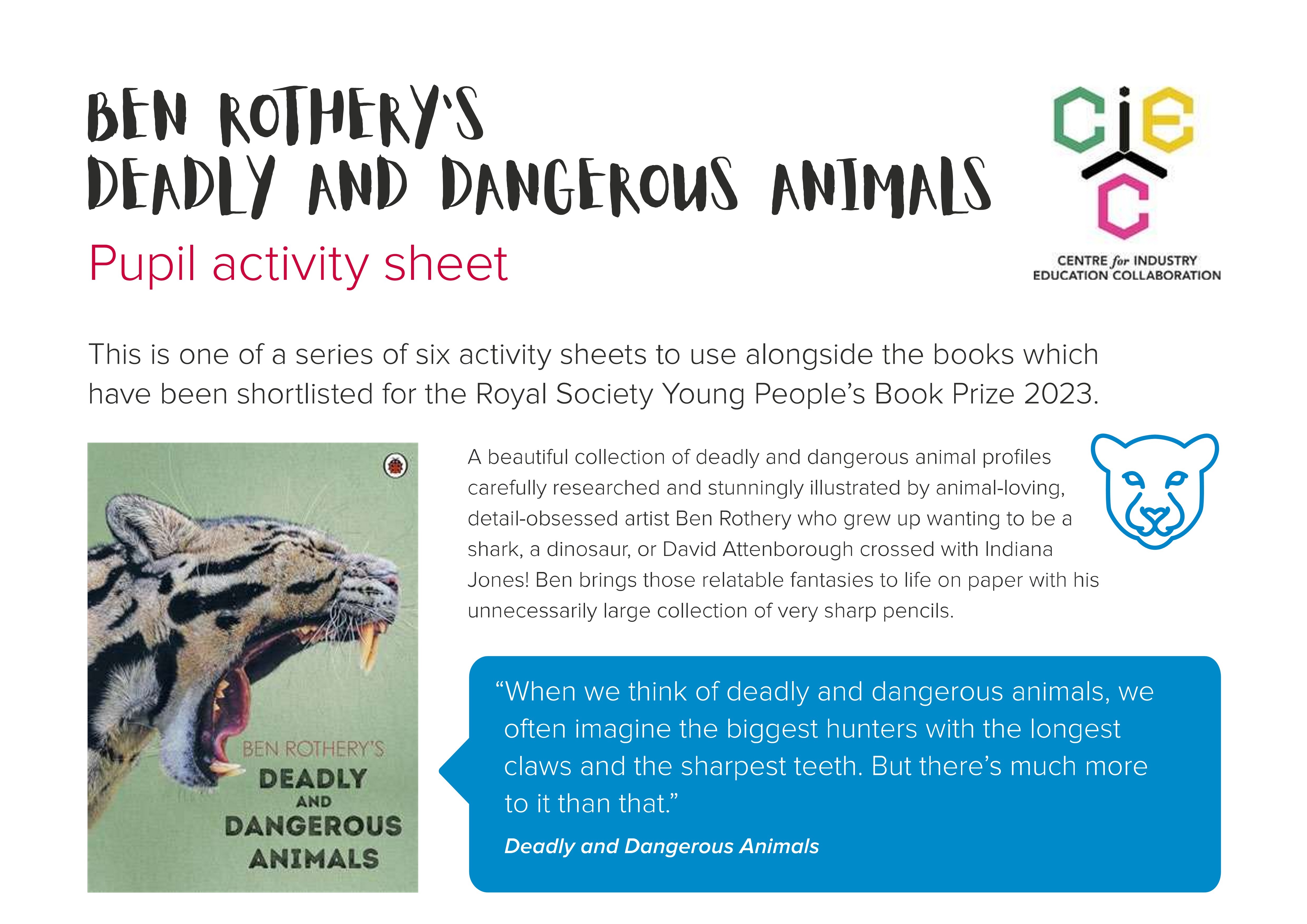Science and literacy activities 2023-24
CIEC has again partnered with the Royal Society to launch six sets of engaging, practical science activities to accompany the Young People’s Book Prize shortlisted books of 2023.
Every year, the Royal Society invites schools, libraries, science centres and youth groups to form a mass judging panel across the UK and vote for the winner of the Young People's Book Prize.
Over 350 schools receive the six shortlisted books and vote for the winner.
View the 2023 shortlisted entries.
Bodies, brains and bogies
Keywords: cross-curricular literacy, YPBP, Royal Society, Young People’s Book Prize, home learning, homework, reading, science club, animals including humans, living things
Written by Dr Paul Ian Cross and illustrated by Steve Brown.
The Royal Society holds an annual competition to find the most popular
children’s science book. Schools, libraries, science centres and youth groups
are invited to form a mass judging panel across the UK. They receive copies of
the shortlisted books and vote for the winner of the Young People's Book
Prize.
CIEC partners with the Royal Society to create six sets of engaging, practical
science activities, curated into teacher and pupil sheets to accompany each
year’s shortlisted books.
These sheets can be used by any schools who would like to increase
engagement with science books and enhance the science learning. Each set of
sheets has ideas for science activities to try at school or at home, a linked
maths investigation and information about related STEM careers.
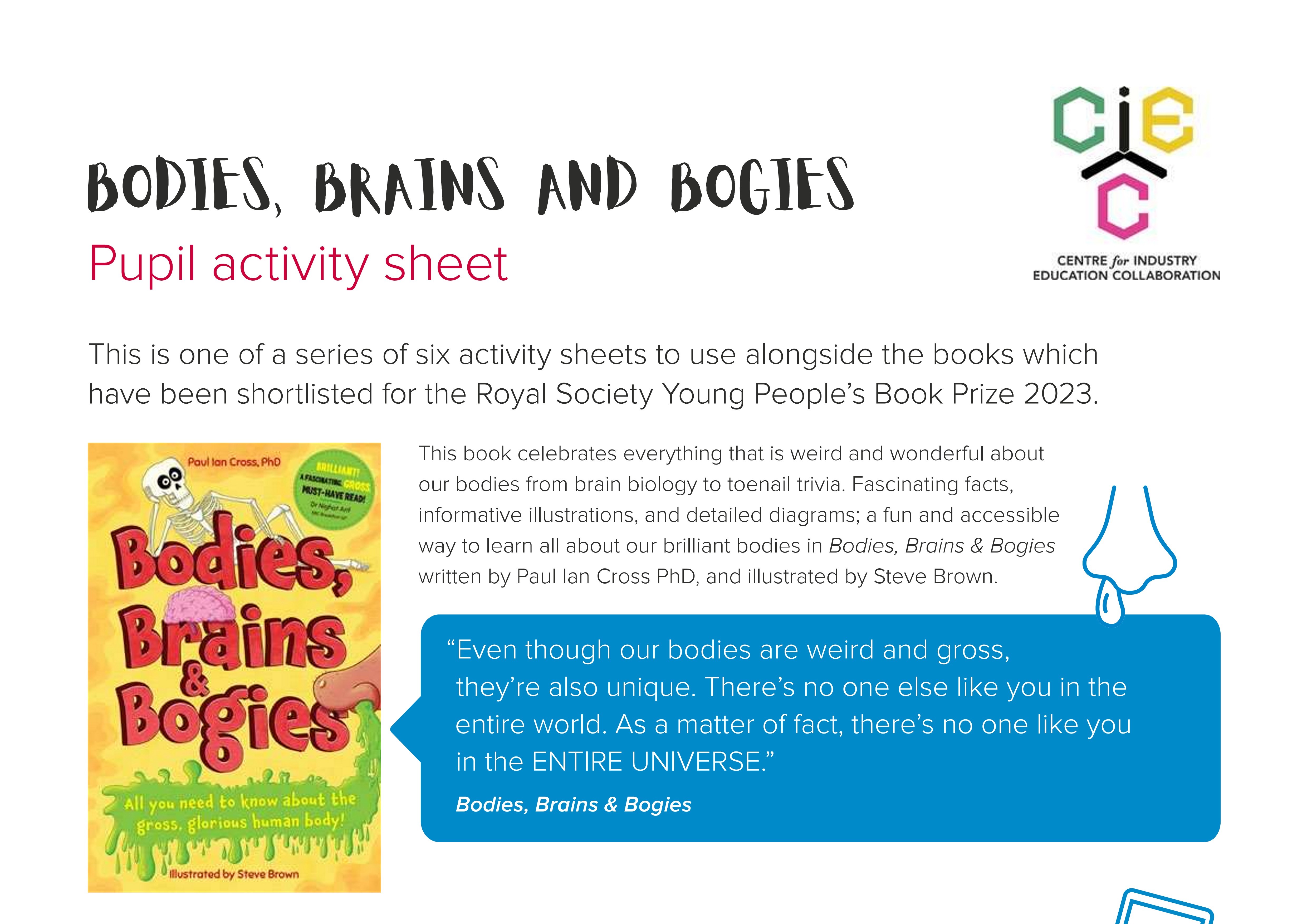
Germs
Keywords: cross-curricular literacy, YPBP, Royal Society, Young People’s Book Prize, home learning, homework, reading, science club, living things, microorganisms
Written by Sarah Hull and illustrated by Teresa Bellon.
This book tells you everything you have always wanted to know about bacteria, viruses and other microorganisms that impact on humans. The investigations on the sheets focus on how scientists develop medicines. There is also a linked maths investigation and information about related STEM careers.
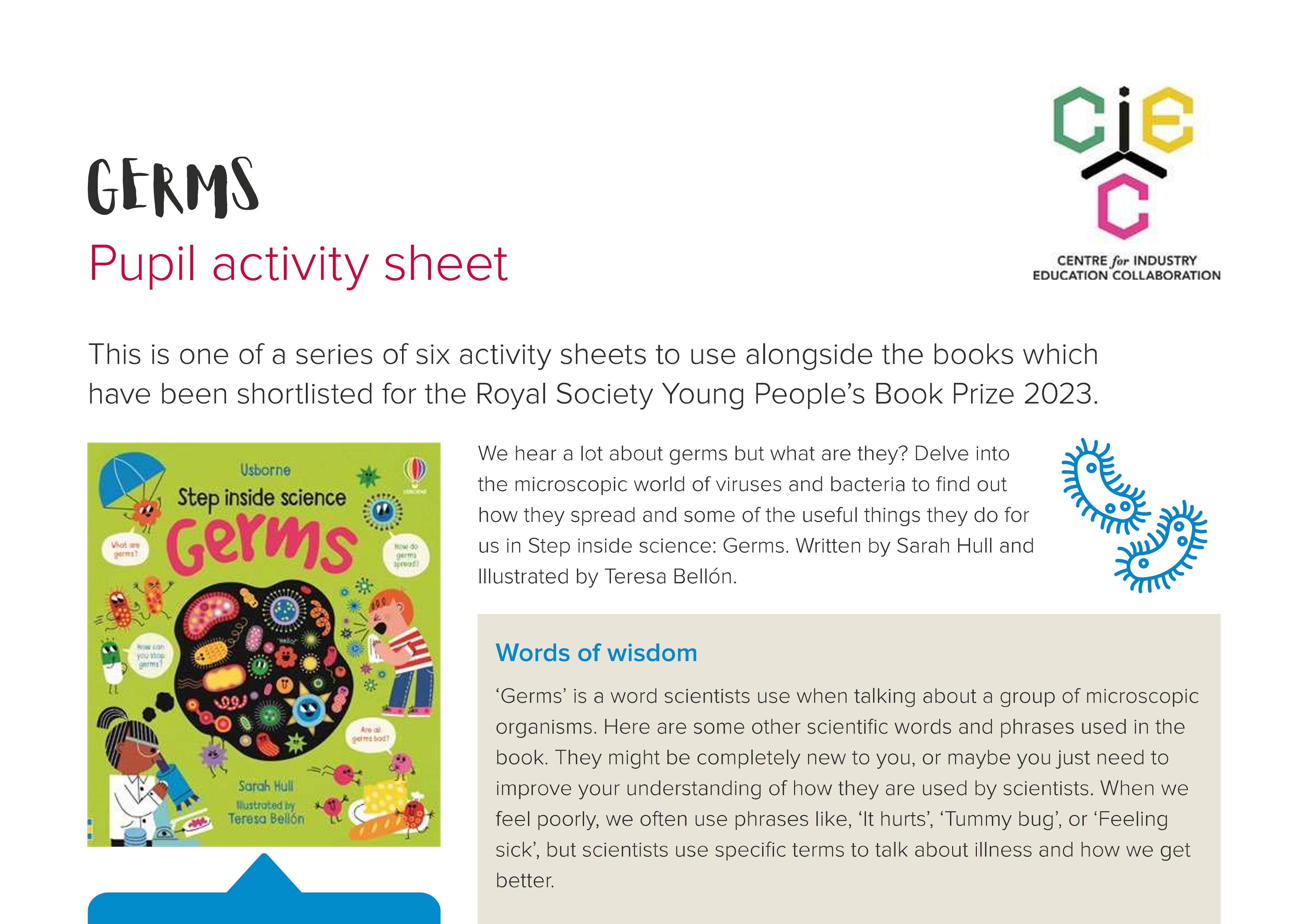
Live like a hunter gatherer
Keywords: cross-curricular literacy, YPBP, Royal Society, Young People’s Book Prize, home learning, homework, reading, science club, living things, history, animals including humans
Written by Naomi Walmsley and illustrated by Mia Underwood.
This book tells you everything that you have always wanted to know about how people survived and thrived in the stone age. The investigations on the sheets focus on how people in the past lived without the technologies that we use today. There is also a linked maths investigation and information about related STEM careers.
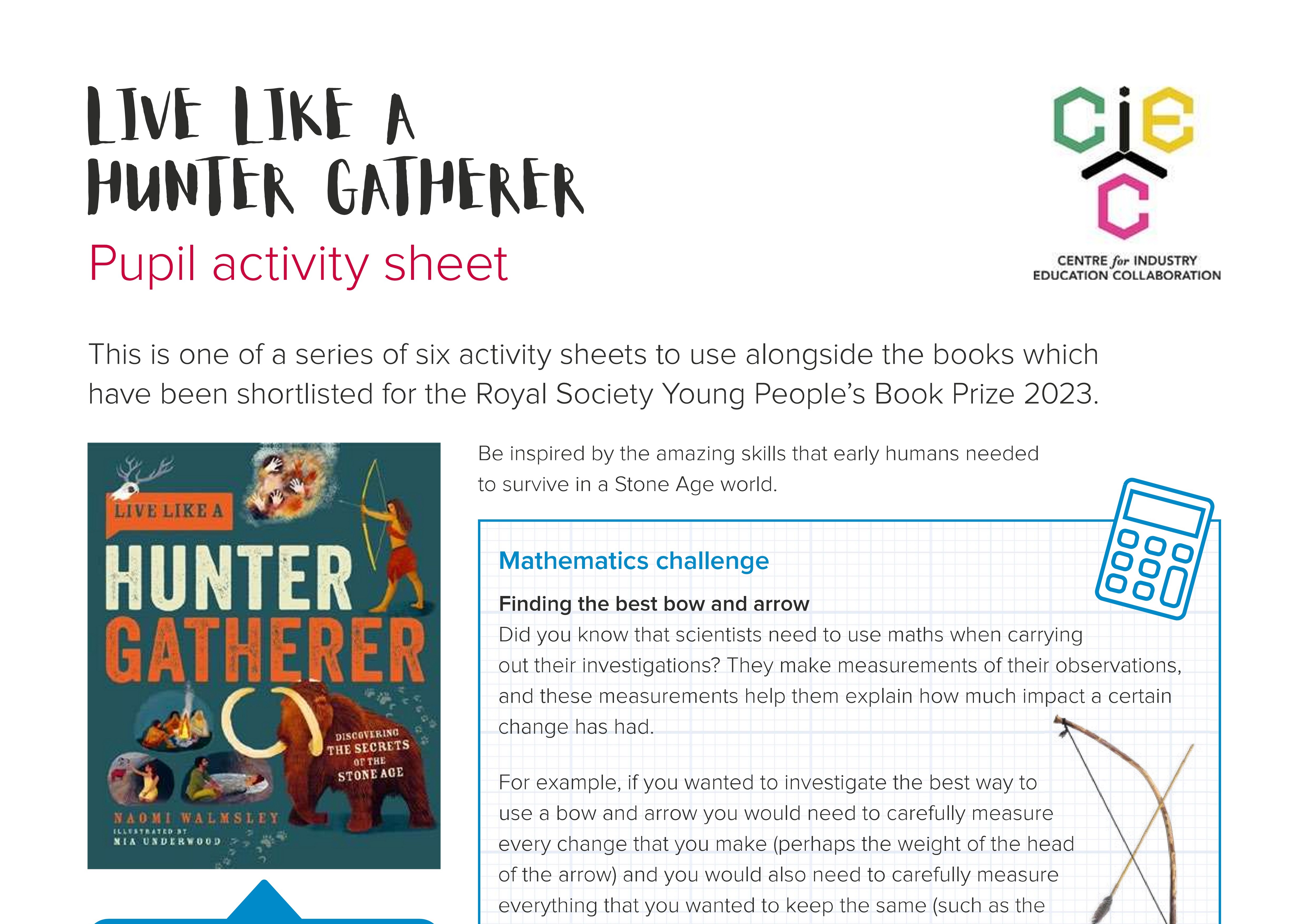
A bug’s world
Keywords: cross-curricular, literacy, YPBP, Royal Society, Young People’s Book Prize, home learning, homework, reading, science club, living things, habitats, animals including humans
By Dr Erica McAlister and illustrated by Stephanie Fizer Coleman.
This book tells you everything that you have always wanted to know insects and other invertebrates. The investigations on the sheets focus on encouraging children to find out which creatures live nearby, and how to look after them. There is also a linked maths investigation and information about related STEM careers.
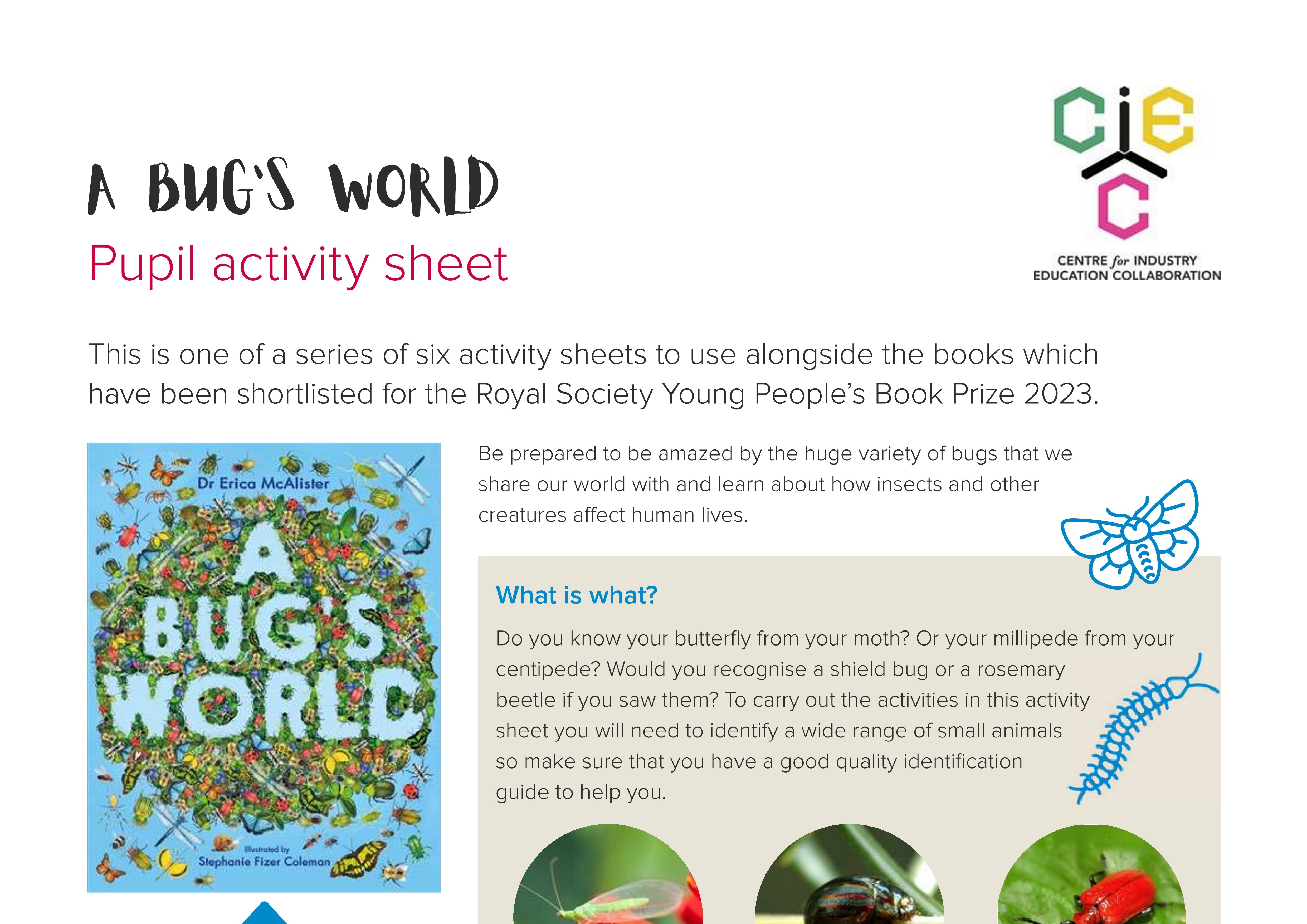
Am I made of stardust?
Keywords: cross-curricular, literacy, YPBP, Royal Society, Young People’s Book Prize, home learning, homework, reading, science club, Earth and space
Written by Dr Maggie Aderin-Pocock and illustrated by Chelen Ecija.
This book tells you everything that you have always wanted to know about space. The investigations on the sheets focus on the issues involved in organising an expedition to Mars. There is also a linked maths investigation and information about related STEM careers.
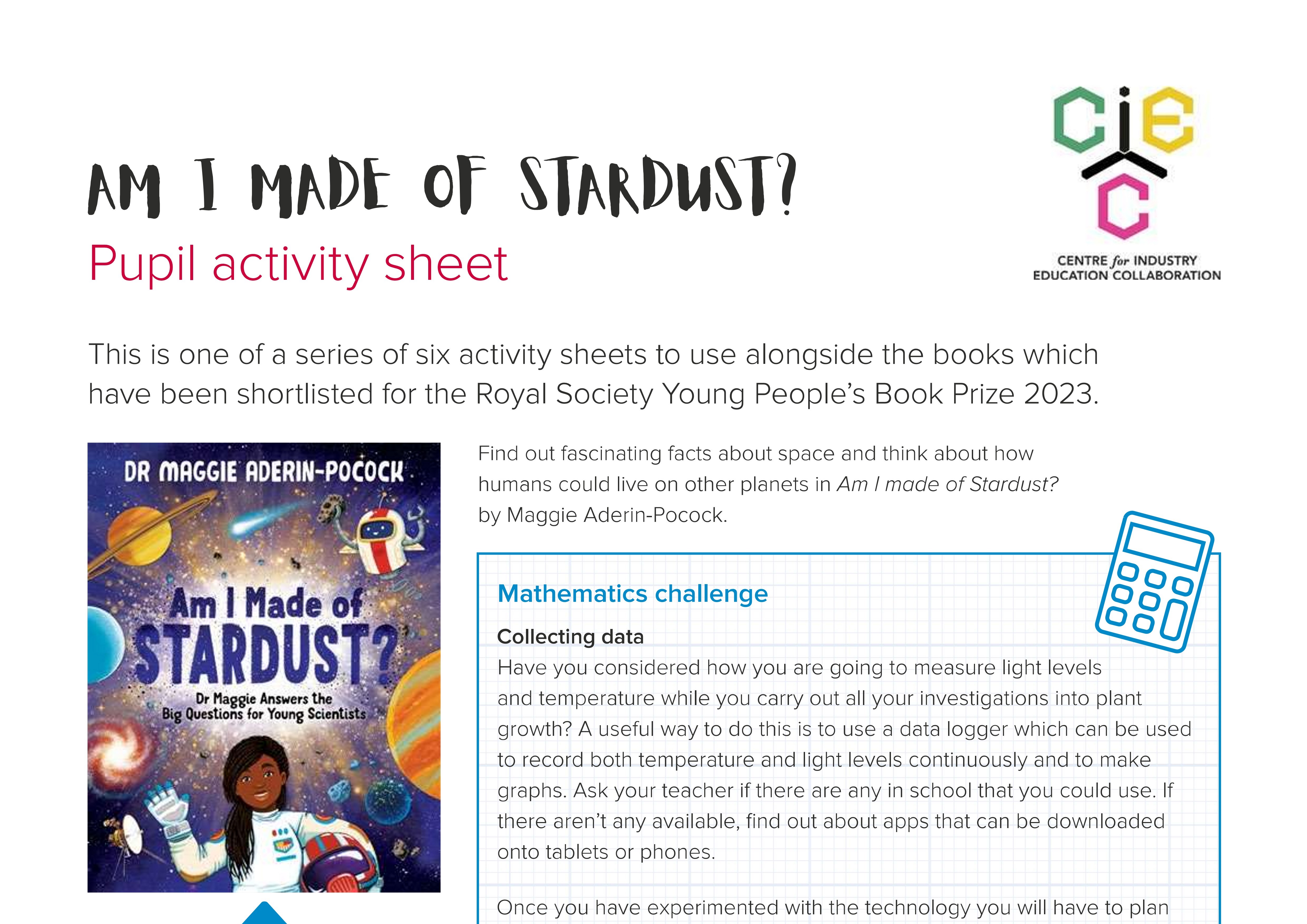
Deadly and dangerous animals
Keywords: cross-curricular, literacy, YPBP, Royal Society, Young People’s Book Prize, home learning, homework, reading, science club, living things, habitats, animals including humans
Written and illustrated by Ben Rothery.
This book tells you everything that you have always wanted to know about amazing animals that are adapted to their environments. The investigations on the sheets focus on finding out about predator and prey animals that live locally. There is also a linked maths investigation and information about related STEM careers.
